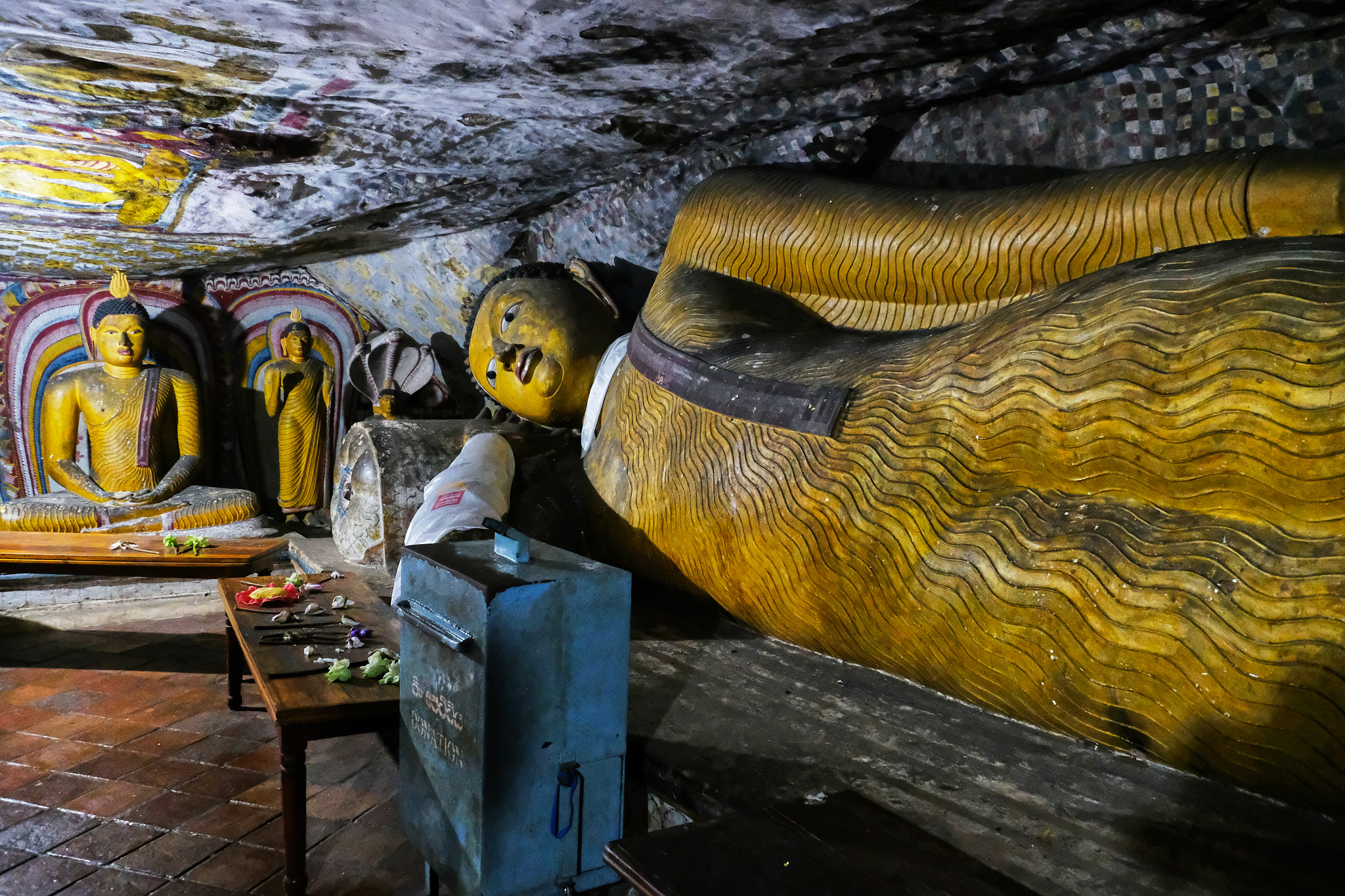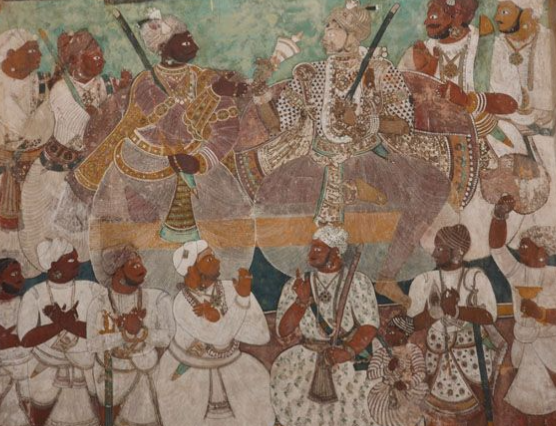|
Nissanka Malla
Nissanka Malla (), also known as Keerti Nissanka and Kalinga Lokeshvara was a king of Polonnaruwa (Sri Lanka) who ruled the country from 1187 to 1196. He is known for his architectural constructions such as the Nissanka Lata Mandapaya, Hatadage and Rankot Vihara, as well as for the refurbishment of old temples and irrigation tanks. Nissanka Malla declared that only a Buddhism, Buddhist had the right to rule the country, thereby securing his position and justifying his claim for kingship. He spent large sums for various constructions and refurbishments, and also gave money to the public in an attempt to put down crimes. He maintained cordial relationships with several countries, and also invaded the states of the Pandyan dynasty, Pandyan and Chola dynasty, Chola dynasties in South India but the invasion failed. Ancestry and family A rock inscription made by Nissanka Malla at Dambulla mentions that he is of the Kalinga dynasty and a descendant from the race of Prince Vijaya. Anothe ... [...More Info...] [...Related Items...] OR: [Wikipedia] [Google] [Baidu] |
Dambulla Cave Temple
Dambulla cave temple (; ), also known as the Golden Temple of Dambulla, is a World Heritage Site (1991) in Sri Lanka, situated in the central part of the country. This site is situated east of Colombo, north of Kandy and north of Matale. Dambulla is the largest and best-preserved cave temple complex in Sri Lanka. The rock towers over the surrounding plains. There are more than eighty documented caves in the surrounding area. Major attractions are spread over five caves, which contain statues and paintings. These paintings and statues are related to Gautama Buddha and his life. There are a total of 153 Buddha statues, three statues of Sri Lankan kings and four statues of deva (Buddhism), gods and goddesses. The latter include Vishnu and the Ganesha. The murals cover an area of . Depictions on the walls of the caves include the temptation by the demon Mara (demon), Mara, and Dhammacakkappavattana Sutta, Buddha's first sermon. Prehistoric Sri Lankans would have lived in these cav ... [...More Info...] [...Related Items...] OR: [Wikipedia] [Google] [Baidu] |
Chola
The Chola Empire, which is often referred to as the Imperial Cholas, was a medieval thalassocratic empire based in southern India that was ruled by the Chola dynasty, and comprised overseas dominions, protectorates and spheres of influence in southeast Asia. The power and the prestige the Cholas had among political powers in South, Southeast, and East Asia at its peak is evident in their expeditions to the Ganges, naval raids on cities of the Srivijaya Empire on the island of Sumatra, and their repeated embassies to China. K. A. Nilakanta Sastri, ''A History of South India'', p. 158 The Chola fleet represented the peak of ancient Indian maritime capacity. Around 1070, the Cholas began to lose almost all of their overseas territories but the later Cholas (1070–1279) continued to rule portions of southern India. The Chola empire went into decline at the beginning of the 13th century with the rise of the Pandyan dynasty, which ultimately caused the Chola's downfall. K. A ... [...More Info...] [...Related Items...] OR: [Wikipedia] [Google] [Baidu] |
Pandya
The Pandya dynasty (), also referred to as the Pandyas of Madurai, was an ancient Tamil dynasty of South India, and among the four great kingdoms of Tamilakam, the other three being the Pallavas, the Cholas and the Cheras. Existing since at least the 4th to 3rd centuries BCE, the dynasty passed through two periods of imperial dominance, the 6th to 10th centuries CE, and under the 'Later Pandyas' (13th to 14th centuries CE). Under Jatavarman Sundara Pandyan I and Maravarman Kulasekara Pandyan I, the Pandyas ruled extensive territories including regions of present-day South India and northern Sri Lanka through vassal states subject to Madurai. The Pandya dynasty is the longest ruling dynasty in the world. The rulers of the three Tamil dynasties were referred to as the " three crowned rulers (the mu-ventar) of the Tamil Region" in the southern part of India. The origin and the timeline of the Pandya dynasty are difficult to establish. The early Pandya chieftains ruled ... [...More Info...] [...Related Items...] OR: [Wikipedia] [Google] [Baidu] |
Rameswaram
Rameswaram (; also transliterated as Ramesvaram, Rameshwaram) is a municipality in the Ramanathapuram district of the Indian state of Tamil Nadu. It is on Pamban Island separated from mainland India by the Pamban channel and is about from Mannar Island, Sri Lanka. It is in the Gulf of Mannar, at the tip of the Indian peninsula. Pamban Island, also known as Rameswaram Island, is connected to mainland India by the New Pamban Bridge. Rameswaram is the terminus of the railway line from Chennai and Madurai. Together with Varanasi, it is considered to be one of the holiest places in India for Hindus and is part of the Char Dham pilgrimage. According to the Ramayana, Rama is described to have built a bridge from the vicinity of this town across the sea to Lanka to rescue his wife Sita from her abductor Ravana. The temple, dedicated to the Hindu god Shiva, is at the centre of the town and is closely associated with Rama and Shiva. The temple and the town are considered a holy pil ... [...More Info...] [...Related Items...] OR: [Wikipedia] [Google] [Baidu] |
University Of Cambridge Press
Cambridge University Press was the university press of the University of Cambridge. Granted a letters patent by King Henry VIII in 1534, it was the oldest university press in the world. Cambridge University Press merged with Cambridge Assessment to form Cambridge University Press and Assessment under Queen Elizabeth II's approval in August 2021. With a global sales presence, publishing hubs, and offices in more than 40 countries, it published over 50,000 titles by authors from over 100 countries. Its publications include more than 420 academic journals, monographs, reference works, school and university textbooks, and English language teaching and learning publications. It also published Bibles, runs a bookshop in Cambridge, sells through Amazon, and has a conference venues business in Cambridge at the Pitt Building and the Sir Geoffrey Cass Sports and Social Centre. It also served as the King's Printer. Cambridge University Press, as part of the University of Cambridge, was ... [...More Info...] [...Related Items...] OR: [Wikipedia] [Google] [Baidu] |
Khmer Empire
The Khmer Empire was an empire in Southeast Asia, centered on Hydraulic empire, hydraulic cities in what is now northern Cambodia. Known as Kambuja (; ) by its inhabitants, it grew out of the former civilization of Chenla and lasted from 802 to 1431. Historians call this period of History of Cambodia, Cambodian history the Angkor period, after the empire's most well-known capital, Angkor. The Khmer Empire ruled or vassalised most of Mainland Southeast Asia and stretched as far north as southern China. The beginning of the Khmer Empire is conventionally dated to 802, when Khmer people, Khmer prince Jayavarman II declared himself ''chakravartin'' (, a title equivalent to 'emperor') in the Phnom Kulen mountains. Although the end of the Khmer Empire has traditionally been marked with the fall of Angkor to the Siamese Ayutthaya Kingdom in 1431, the reasons for the empire's collapse are still debated amongst scholars. Researchers have determined that a period of strong monsoon rains ... [...More Info...] [...Related Items...] OR: [Wikipedia] [Google] [Baidu] |
House Of Kalinga
A house is a single-unit residential building. It may range in complexity from a rudimentary hut to a complex structure of wood, masonry, concrete or other material, outfitted with plumbing, electrical, and heating, ventilation, and air conditioning systems.Schoenauer, Norbert (2000). ''6,000 Years of Housing'' (rev. ed.) (New York: W.W. Norton & Company). Houses use a range of different roofing systems to keep precipitation such as rain from getting into the dwelling space. Houses generally have doors or locks to secure the dwelling space and protect its inhabitants and contents from burglars or other trespassers. Most conventional modern houses in Western cultures will contain one or more bedrooms and bathrooms, a kitchen or cooking area, and a living room. A house may have a separate dining room, or the eating area may be integrated into the kitchen or another room. Some large houses in North America have a recreation room. In traditional agriculture-oriented societies, domes ... [...More Info...] [...Related Items...] OR: [Wikipedia] [Google] [Baidu] |
Mahinda VI Of Sri Lanka
Mahinda VI (?–1187) was a king of the Kingdom of Polonnaruwa who came to the throne by killing his predecessor Vijayabahu II. He only reigned for five days, being killed by his successor and Vijayabahu II's sub-king, Nissanka Malla. During his short reign, he wrote the Madigiriya inscription to show regards to Maharaja Samara of Srivijaya for his deeds to free the Kingdom of Polonnaruwa from the Cholas. See also * Mahavamsa * List of monarchs of Sri Lanka * History of Sri Lanka The history of Sri Lanka covers Sri Lanka and the history of the Indian subcontinent and its surrounding regions of South Asia, Southeast Asia and the Indian Ocean. Prehistoric Sri Lanka goes back 125,000 years and possibly even as far back a ... * Madigiriya inscription References External links Kings & Rulers of Sri LankaCodrington's Short History of Ceylon Monarchs of Polonnaruwa M M M {{SriLanka-hist-stub ... [...More Info...] [...Related Items...] OR: [Wikipedia] [Google] [Baidu] |
Vijayabâhu II Of Sri Lanka
Vijayabahu II (1186–1187) was king of the Kingdom of Polonnaruwa, in what is now Sri Lanka. He was the nephew of his predecessor, Parakramabahu I. See also * Mahavamsa * List of monarchs of Sri Lanka * History of Sri Lanka The history of Sri Lanka covers Sri Lanka and the history of the Indian subcontinent and its surrounding regions of South Asia, Southeast Asia and the Indian Ocean. Prehistoric Sri Lanka goes back 125,000 years and possibly even as far back a ... References External links Kings & Rulers of Sri LankaCodrington's Short History of Ceylon Monarchs of Polonnaruwa Sinhalese kings House of Vijayabahu 12th-century Sinhalese monarchs {{SriLanka-hist-stub ... [...More Info...] [...Related Items...] OR: [Wikipedia] [Google] [Baidu] |
Throne Of Nissanka Malla
A throne is the seat of state of a potentate or dignitary, especially the seat occupied by a sovereign (or viceroy) on state occasions; or the seat occupied by a pope or bishop on ceremonial occasions. "Throne" in an abstract sense can also refer to the monarchy itself, an instance of metonymy, and is also used in many expressions such as " the power behind the throne". A throne is a symbol of divine and secular rule and the establishment of a throne as a defining sign of the claim to power and authority. It can be with a high backrest and feature heraldic animals or other decorations as adornment and as a sign of power and strength. A throne can be placed underneath a canopy or baldachin. The throne can stand on steps or a dais and is thus always elevated. The expression "ascend (mount) the throne" takes its meaning from the steps leading up to the dais or platform, on which the throne is placed, being formerly comprised in the word's significance. Coats of arms or insignia can ... [...More Info...] [...Related Items...] OR: [Wikipedia] [Google] [Baidu] |








